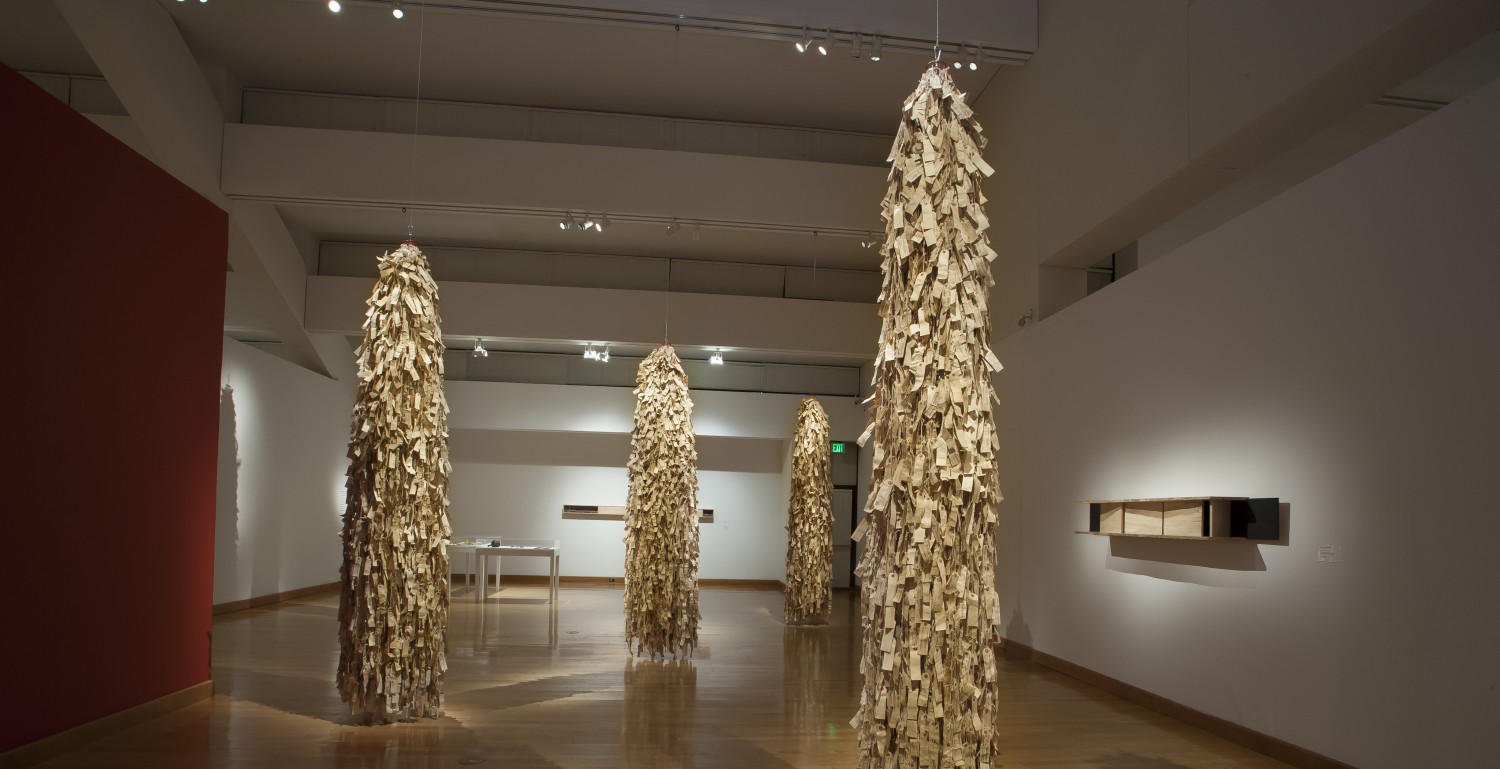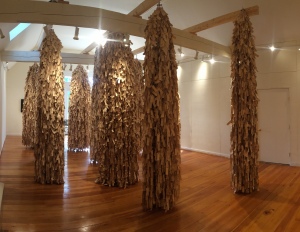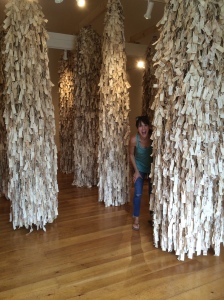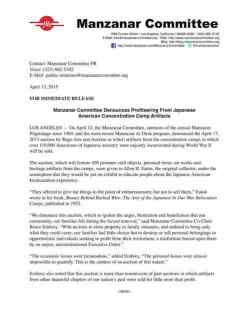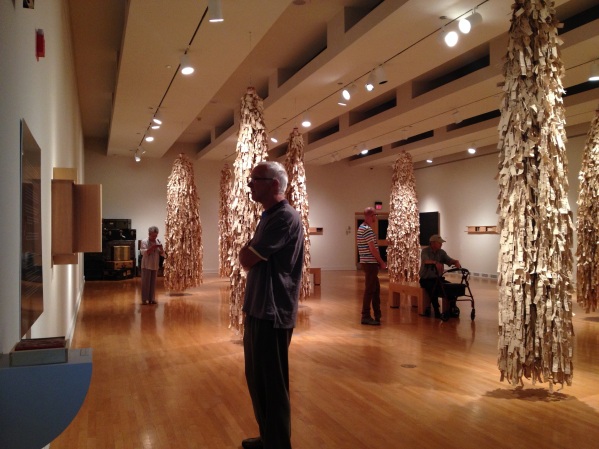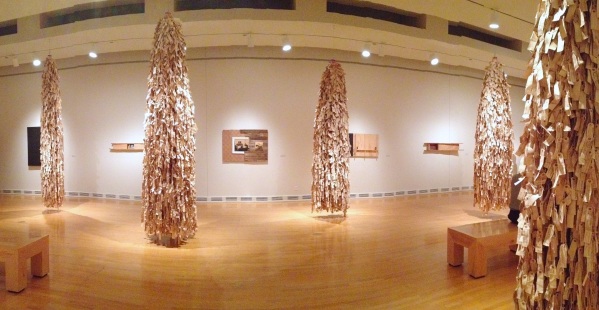I am pleased to announce that my exhibition, EO9066, accompanied by my project, The Tag Project has been included in a large exhibition, “Minidoka: Artist as Witness” at the Boise Art Museum in Idaho. My tag grouping, Minidoka, was acquired by the Boise Art Museum in 2015 and this marks the first time their acquisition will be on view in their permanent home.
Three of the artists included in the exhibition—Takuichi Fujii (1891-1964), Kenjiro Nomura (1896-1956), and Roger Shimomura (b. 1939)—were relocated to Minidoka from Seattle, Washington, with their families during WWII. Both Fujii and Nomura painted a large number of works during their incarcerations. Their watercolors, set in the terrain of southern Idaho, are dotted with barbed wire and guard towers, providing intense and intimate depictions of the Japanese American incarceration experience.
Also on view are large-scale paintings by Roger Shimomura, who spent two years at Minidoka as a young boy. In The Lineup, which portrays a group of men and boys queuing outside the lavatory, Shimomura intends to lay bare the uncomfortable and often humiliating day-to-day realities of living at Minidoka. In American Infamy No. 2, on the other hand, he means to expose the political and military mindset that allowed EO 9066 to go unchecked.
Selected works from photographer Teresa Tamura’s (b. 1960) recent book project Minidoka: An American Concentration Camp will also be on view. Tamura’s photo series documents Minidoka today and follows up with former residents. The first photograph she took for the series is a portrait of artist Roger Shimomura, which was taken at the Boise Art Museum in 2001—the same year that President Clinton designated 72.75 acres of the original Minidoka War Relocation Center as the 385th National Park Service unit.
I am very excited and honored to be showing with these individuals, and I look forward to seeing the exhibition.
I will be giving a talk on Wednesday, November 9th at 6 PM which will be held at:
Boise State University
Special Events Center
1800 University Drive
Boise, ID 83706
Tickets may be purchased at this link.
The exhibition opened October 8, 2016 and will close on January 15, 2017.
Organized by the Boise Art Museum
Sponsored by the Laura Moore Cunningham Foundation and supported in part by an award from the National Endowment for the Arts with additional support from the Charles Redd Center for Western Studies, the Boise Valley Japanese American Citizens League, and the Snake River Japanese American Citizens League.
